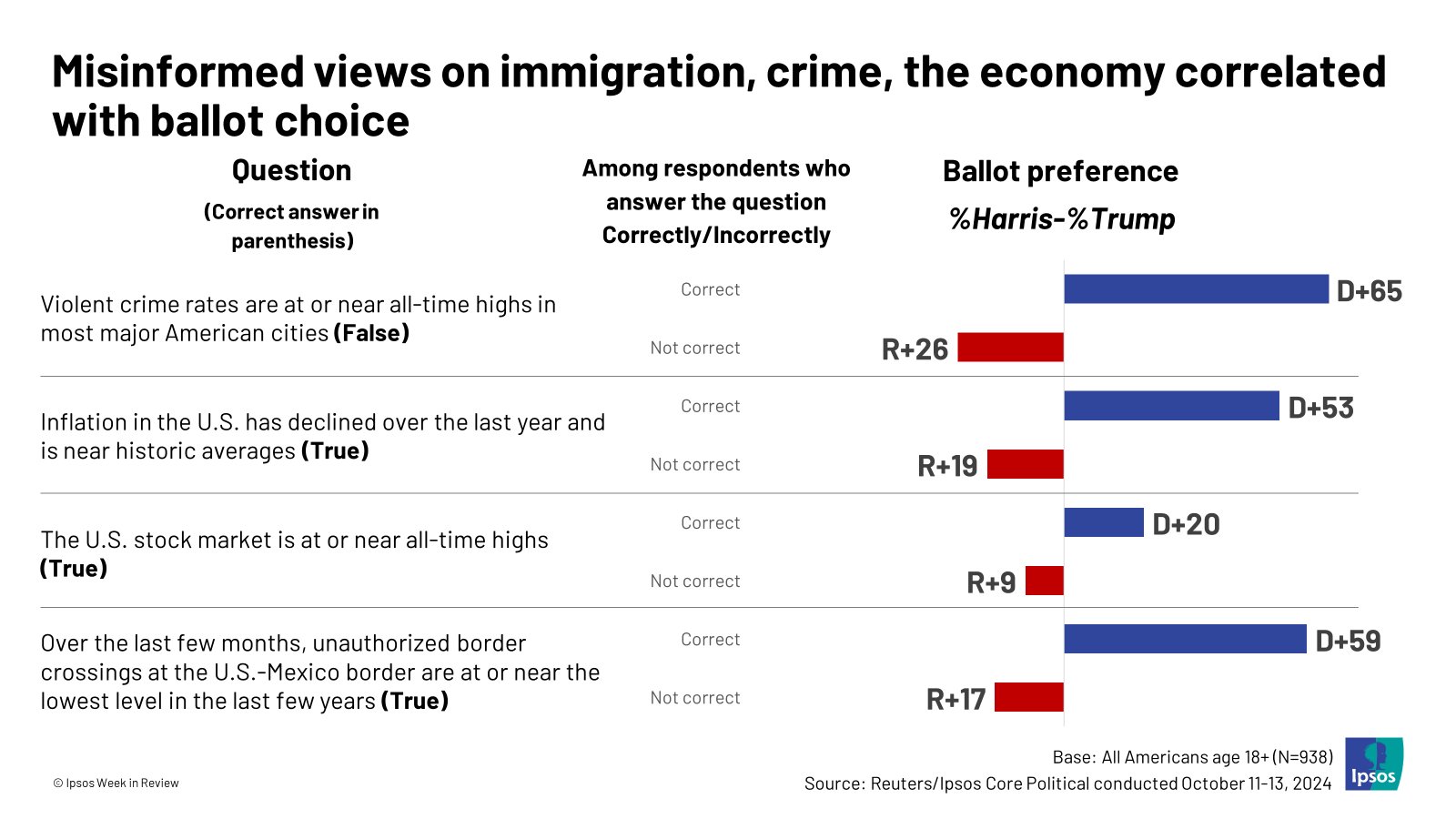Election 2024 Debrief: Insights from Communication Research
By: Michelle Amazeen

Since November 5th, there has been ongoing reflection on why the election ultimately favored Trump, particularly given his frequent use of misleading or false claims. For those who study media and communication, the link between misinformation and voting behavior is concerning. A Reuters/Ipsos poll found that Americans misinformed about crime rates, the economy, and immigration were more likely to vote for Trump.

One critical factor not fully captured by polling data is the persistence of high prices on essentials like groceries and housing, despite a decrease in inflation over the past year. If people struggle to put food on the table or keep up with rent, that tangible economic hardship outweighs broader statistical trends.
At the same time, the constant barrage of misinformation – spread through ads, news programming, and social media – can create an illusory truth effect where repetition makes false claims seem credible. This repetition led many to believe that issues like border crossings and inflation remained out-of-control, despite evidence suggesting otherwise.
In understanding the election outcome, it’s also important to consider the quickly evolving media environment and changes in how people are getting their news and information. These are topics I have explored in-depth with my students throughout the year. Podcasts, for example, are an increasingly popular medium for news, with nearly half of US adults having listened to at least one in the past month, according to Statista. Both presidential candidates tapped into this trend, appearing on influential podcasts such as Joe Rogan’s (Trump) and Howard Stern’s (Harris). Simultaneously, many Americans are turning away from traditional news outlets and are seeking information online from alternative sources and influencers. Even some prominent journalists have left legacy media to strike out on their own (see Kara Swisher, Taylor Lorenz, and Chris Wallace).
Social media has also become a dominant news source. More than half (54%) of US adults, and over three-quarters (78%) of young adults aged 18-24, get their news from social media at least occasionally. My students, drawing from their own experiences and research, tell me that young people prefer social media for news because it’s accessible, caters to shorter attention spans, and—importantly—is free. With paid news subscriptions largely unappealing to young audiences, free access on platforms like Instagram and TikTok is more attractive.
However, these alternative news sources often lack the commitment to journalistic principles like verification and accuracy. Since Twitter’s rebranding to X, the platform has become a significant vector for misinformation. Facebook has also deemphasized its role as a news source, removing its news tab and ending licensing deals with publishers. While some news influencers strive to engage and inform audiences, foreign adversaries have also leveraged the influence of certain content creators to spread conspiratorial narratives that deepen existing societal divisions.
The election outcome highlights how emotional narratives held more sway than facts and logic. Interestingly, my research with Dr. Arunima Krishna has shown that narrative-based counter-messaging can help combat misinformation. This offers a hopeful silver lining for our communication students, who are learning to become the emotionally resonant storytellers of tomorrow.
To make communication research more accessible to the public, the CRC recently launched The COMversation, a podcast that connects academic insights with current events. Hosted by Dr. Charlotte Howell, the debut episode dives into the evolving norms of communication and the role of misinformation in politics, providing listeners with an engaging, in-depth discussion on these timely issues.
If you’re interested in exploring how communication research informs our understanding of current events, join us on The COMversation. Listen to the latest episode, share it with your network, and be part of a conversation that strives for a more informed and engaged public.